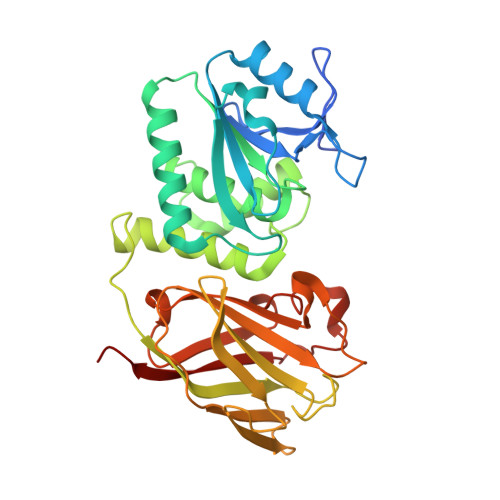A glutamate switch controls voltage-sensitive phosphatase function.
Liu, L., Kohout, S.C., Xu, Q., Muller, S., Kimberlin, C.R., Isacoff, E.Y., Minor, D.L.(2012) Nat Struct Mol Biol 19: 633-641
- PubMed: 22562138
- DOI: https://doi.org/10.1038/nsmb.2289
- Primary Citation of Related Structures:
3V0D, 3V0E, 3V0F, 3V0G, 3V0H, 3V0I, 3V0J - PubMed Abstract:
The Ciona intestinalis voltage-sensing phosphatase (Ci-VSP) couples a voltage-sensing domain (VSD) to a lipid phosphatase that is similar to the tumor suppressor PTEN. How the VSD controls enzyme function has been unclear. Here, we present high-resolution crystal structures of the Ci-VSP enzymatic domain that reveal conformational changes in a crucial loop, termed the 'gating loop', that controls access to the active site by a mechanism in which residue Glu411 directly competes with substrate. Structure-based mutations that restrict gating loop conformation impair catalytic function and demonstrate that Glu411 also contributes to substrate selectivity. Structure-guided mutations further define an interaction between the gating loop and linker that connects the phosphatase to the VSD for voltage control of enzyme activity. Together, the data suggest that functional coupling between the gating loop and the linker forms the heart of the regulatory mechanism that controls voltage-dependent enzyme activation.
Organizational Affiliation:
Cardiovascular Research Institute, University of California, San Francisco, San Francisco, California, USA.















